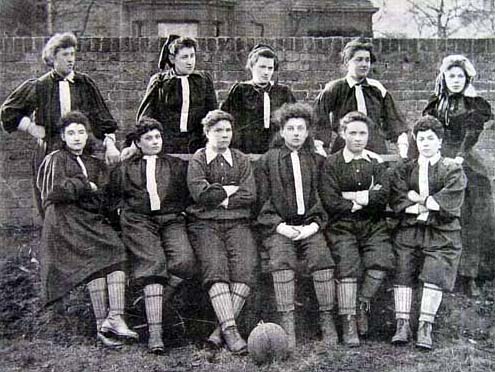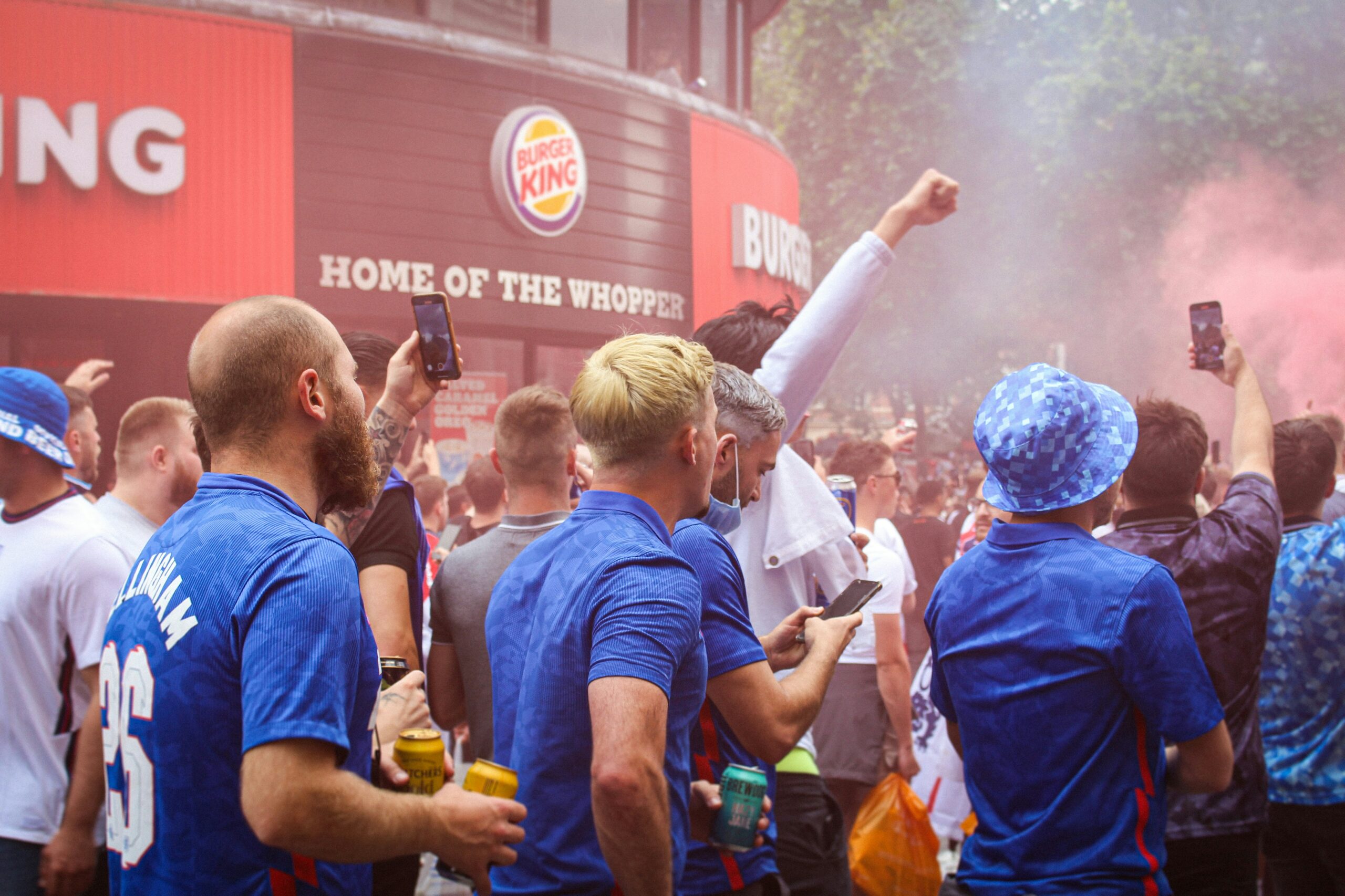Sports have long been an integral part of our society. In fact, it’s almost impossible to imagine one without them. They offer a platform to showcase physical expertise as well as embodying the brilliance of community spirit and camaraderie. But beneath the surface of the beautiful game we call football bubbles toxic masculinity, stereotyping, misogyny, and homophobia. So, let us examine the biases within the nations favourite game.
Historic Homophobia
Football has been homophobic since its creation, which is unsurprising seeing as the treasured sport dates back to the 12th century. Homosexuality in football was widely considered a taboo due to the sport being seen as a display of masculinity. Any rejection of this norm has since been met with backlash, most notably in the tragic case of Justin Fashanu. Fashanu, the first openly gay footballer in the UK, bravely came out in the 1990’s and serves as a devastating reminder of the challenges gay players have to face throughout their careers. Usually resulting in male players choosing to hide their identities until retirement.
Football has long been a male dominated sport, with women’s teams only recently gaining in popularity and social acceptance. For a long time women weren’t ‘allowed’ to play the sport let alone fill a stadium. And though gender disparities are improving, homophobia isn’t. Homophobia is still rife in men’s football, Stonewall’s findings highlight its particularly vicious presence in it’s fanbase with a staggering 7 in 10 reporting to have heard or witnessed homophobia from the terraces. Women’s football however is a stark contrast garnering a huge LGBTQ+ following.
 British Ladies Football Club 1895
British Ladies Football Club 1895
The Ugly Side of the Beautiful Game
The rise of hooliganism since the 1970’s Europe has caused significant concern over security at football matches, and the damage to football’s public image. Picture drunk rowdy fans aggressively chanting on the streets and causing chaos during matches. Beer bottles everywhere, foul language filling the air. Suddenly, the beautiful game becomes a misogynistic cesspit, where is the fun in that?
If that doesn’t sound unpleasant enough, it’s not just fans that fuel this toxic male culture. Managers and coaches also find opportunities to insult the identities of players and are often linked to inappropriate conversations that occur in locker rooms. Football is after all an institution, and when toxic male culture is glorified within, it quickly spreads through the ranks.
Fanboy’s
Let’s face it, scoring goals is a massive deal to these die-hard fans. They go starry-eyed the moment their favourite players enters on to the pitch. But what if one of those players were gay? Well disappointingly 1 in 5 say they would be embarrassed if their favourite player came out. Now, if you’re thinking that survey was done on the older generation, you’re wrong. Surprisingly, it comes from 18-24 year old’s who have lived in a much more inclusive world than their predecessors! Thus proving that generational homophobia is also an issue here.
The University of Sunderland’s research shows that hooliganism worsens when fans associate their teams’ image to physical and emotional male domination. You have probably heard male fans poke fun at female fans even coining the term ‘fangirling’. However male sports fans are statistically shown to be more likely to engage in aggressive fan behaviour. How embarrassing fanboys!

Score the Equalizer
Well we can see where homophobia stems from in men’s football and why it’s players are reluctant to come out, but why is it so different for women playing the same sport? It’s not just different actually, its the polar opposite. Homophobia in women’s football is practically non existent, in fact it’s players are assumed gay.
One reason could be the initiatives in women’s football such as Women in Football which admirably tackles issues such as protecting the rights of female LGBTQ+ players from abuse. In men’s football, the lack of openly gay male footballers makes it difficult to implement the same initiatives. We are yet to have an openly gay male football player in the Premier League, whereas women’s football proudly champions a much higher number of openly gay football players. It is an uphill battle for men’s football to advocate for better tolerance, when players are too fearful to advocate for themselves.
Inspiring female footballers including Casey Stoney and Beth Mead, have championed for awareness by discussing their experiences of coming out as lesbian, garnering incredible support for their openness. Seven out of 23 of our stellar Lionesses team are out and proud players who serve as inspiring role models. So, statistically speaking there has to be gay male footballers in the premier league, and potentially our England squad. Hiding in plain sight, helplessly waiting for retirement to be their authentic selves. In 2024, that’s a sad state of affairs.
It’s not just the initiatives or awareness though that abolishes homophobia from the women’s game. Some will argue that ‘no one really cares because women’s football isn’t taken seriously’, others will say ‘of course they’re lesbians, they play football.’ Whilst both statements could be true, the real truth is that though homophobia is absent stereotyping isn’t…
Masc Vs Fem
Stereotyping in the women’s game is just as damaging as homophobia in the men’s. LGBTQ+ players may feel more comfortable in their environment, however their hetro team mates might not. As we said earlier, women who play football are automatically assumed gay, this acts as a barrier to young straight girls from pursuing the sport in fear of being mislabeled.
Masculine norms have also long invaded the sporting scene for women, trans and non-binary players. You probably heard the rumours growing up, that your female PE teachers were lesbians, and that football was a “boys sport.”
Newsflash: kicking a ball doesn’t make you gay!
When children grow up with harmful stereotypes about who should or should not play sports, they can miss discovering their skill and passion, as well as hindering important gender equality in sports education.
It’s not just stereotyping of female footballers that’s to blame here, but the stereotyping of lesbians in general. They are again assumed to be masculine presenting or for want of a better word ‘butch.’ This archaic view of lesbians is what’s driven the over estimation of gay players in the women’s league. In reality, lesbians are the minority in most teams. It seems when it comes to football, the world forgets that hetro women can display masculine traits, just the same as gay women can be feminine.
Feminine footballers around the globe are slowly breaking these stereotypes, but this opens them up to another line of fire…
Stereotypical Headlines
Female sports players are vulnerable to having their appearances nitpicked by the media rather than be appreciated for their skills. Look at how differently the media treats Alisha Lehmann and Jack Grealish for example. Both incredible players who excel in their football careers, both players are considered attractive, yet judgements on Alisha Lehmann’s appearance frequently overshadow her professional achievements.
Grealish hits the headlines for his football prowess, and ‘ladish’ behaviour off the pitch. Yet for Lehamann headlines such as ‘Alisha Lehmann stuns fans with a fresh-faced look as they say: ‘is this a different person?’ take the forefront. Highlighting how we still live in a world where women are told that their value lies in how they look, not how they perform. Of course, it is nothing new for fans to appreciate players’ appearances, yet the hype around Lehmann’s looks is especially telling of the sexualisation and gender stereotyping towards female football players.
Alisha, along with the likes of Ella Toone and Alex Greenwood defies the stereotype that female players have to be “masculine”, but should this much importance really be placed on how masculine or feminine presenting a player is? Their individual aspirations, hard-work and prowess should annihilate these surface-level judgments.
Trans-forming the Game
Thanks to wonderful trailblazers like Canadian footballer Quinn, who became the first openly transgender athlete to compete in a World Cup. Vital progress is being made for the rights of transgender athletes in sports. However, trans players still face numerous barriers to fair recognition due to widespread lack of acceptance of gender identities. The Football Association’s current policies on trans players aim to protect them from discriminatory behaviour, yet controversial challenges around regulating testosterone levels for women’s matches and social exclusion make it difficult for them to gain equal opportunities.
In 2023, the Human Rights Campaign reported that a staggering 46% of trans athletes experienced discrimination. Endless hurdles are not only found in organisations’ policies but are also deeply embedded in stigma from fans and sports communities. We simply cannot create an equal sporting world if we exclude trans players from their right to participate. Though initiatives like the International Olympic Committee’s updated guidelines in 2021 addressed eligibility issues for trans athletes and fairer competition, significantly more work is needed both on an organisational level and within community attitudes. Discrimination has always been a stubborn stain throughout history, one that demands relentless change to get rid of.
Future Goals
Players are here to achieve their dreams, not to entertain ridiculous gender norms. According to a report from Women and Sport, young girls who take part in sports at school are 76% more likely to stay engaged as they grow up. Why should we then limit their opportunities for immense growth because of outdated beliefs? It is admirable to see football increasingly being rejected as only a sport for heterosexual men and being championed as a sport for all, regardless of gender identity or sexuality.
As the current excitement of the Euros is uniting fans across the world, it is vital that we reflect on the ongoing challenges entwined in sports culture. Women, trans players, and non-binary players all around the world continue to navigate the sporting world with seemingly more difficulties than men. However, though men might have the upper hand in terms of recognition of talent, and all that comes with it. We must also remember, some are living in fear of being outed in a sport that needs to catch up with the rest of society.
